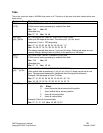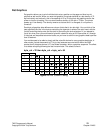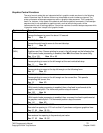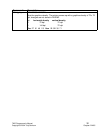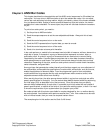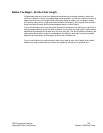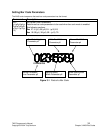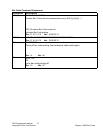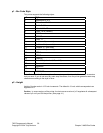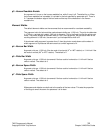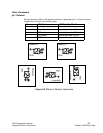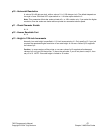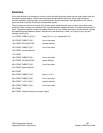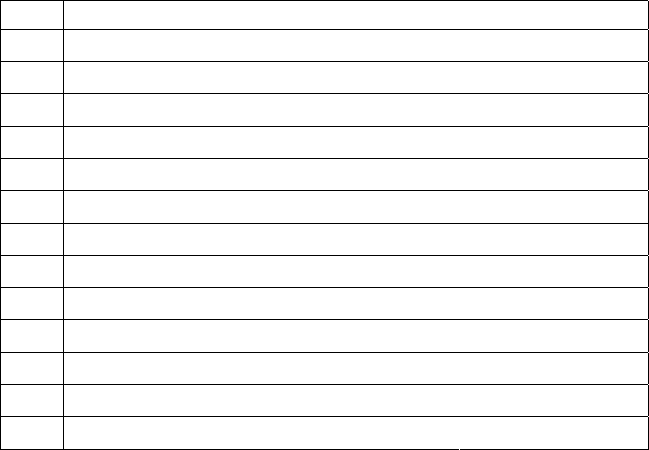
7265 Programmer’s Manual
36
Copyright © 2004 TallyGenicom Chapter 3 ANSI Bar Codes
Values of all the adjustable bar code parameters are stored in NVRAM while power is off. You
can restore the bar code attributes to the factory settings by performing an ISU on the printer.
pn Attribute
p1 style
p2 height
p3 human readable line enable
p4 narrow bar width
p5 wide bar width
p6 narrow space width
p7 wide space width
p8 N / A
p9 rotation
p10 horizontal print density
p11 check character
p12 human readable font
p13 height (in 1/24” increments)
General Rules for Assigning Parameters
You can send the sequence to modify bar code parameters any time except when bar code
mode is active.
If you assign a parameter value outside the permissible range, then that parameter value
reverts to the default value.
Values for narrow bars must be less than values for wide bars. Values for narrow spaces
must be less than values for wide spaces. The ratio between wide and narrow elements
should be about 3:1.
As with other ANSI escape sequences that take multiple parameters, you can use the semicolon
as a place holder when you want to change a higher-numbered parameter while leaving lower-
numbered parameters alone. For example, to set the horizontal print density to 60 dpi without
changing any other bar code attributes, you could send:
ESC [;;;;;;;;;0;;}
Semicolons that trail the last specified parameter are optional. For example, to turn off the
human-readable line without changing any other parameters, you could send:
ESC [;;0}
Or, you could send:
ESC [;;0;;;;;;;;;}
Note: The term “default” is misleading when applied to bar code parameters. This printer stores
bar code parameters in nonvolatile RAM while power is off; except for an ISU or an out-of-range
argument, you might never see the effects of the factory defaults. For this reason, your
application should probably initialize all 12 parameters one time before any symbols are sent.
This is particularly true when other bar code applications are sharing the printer.



